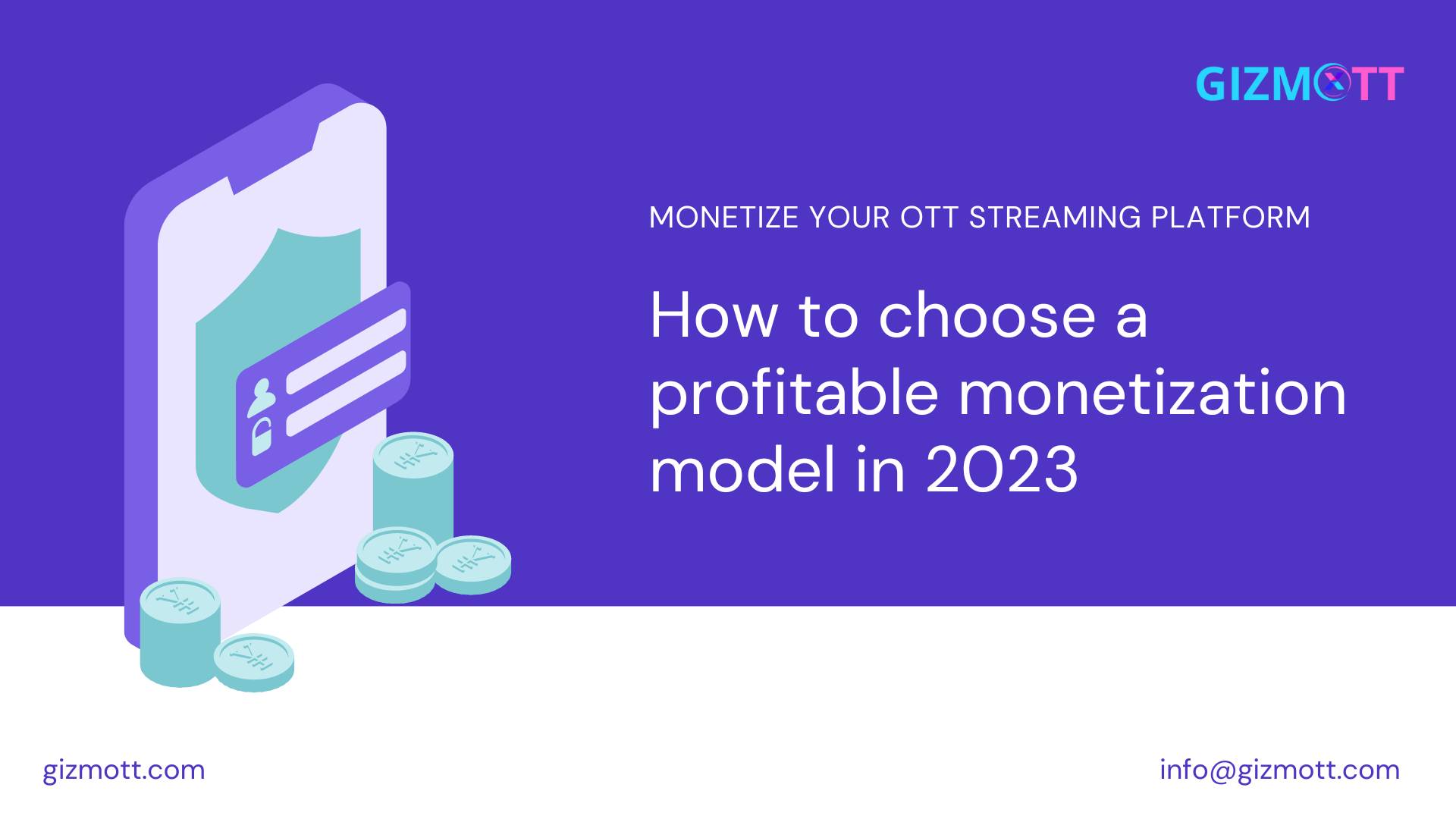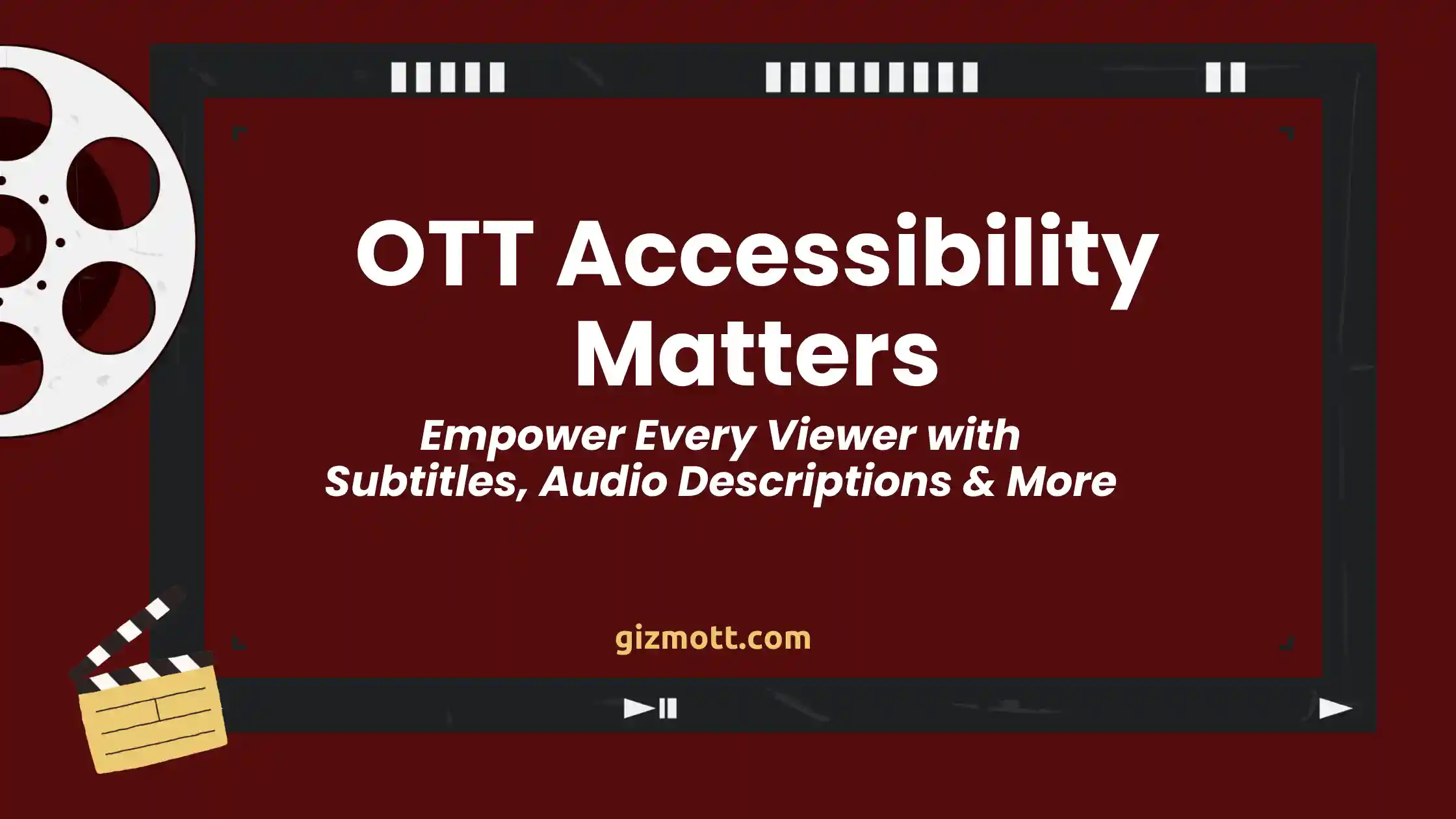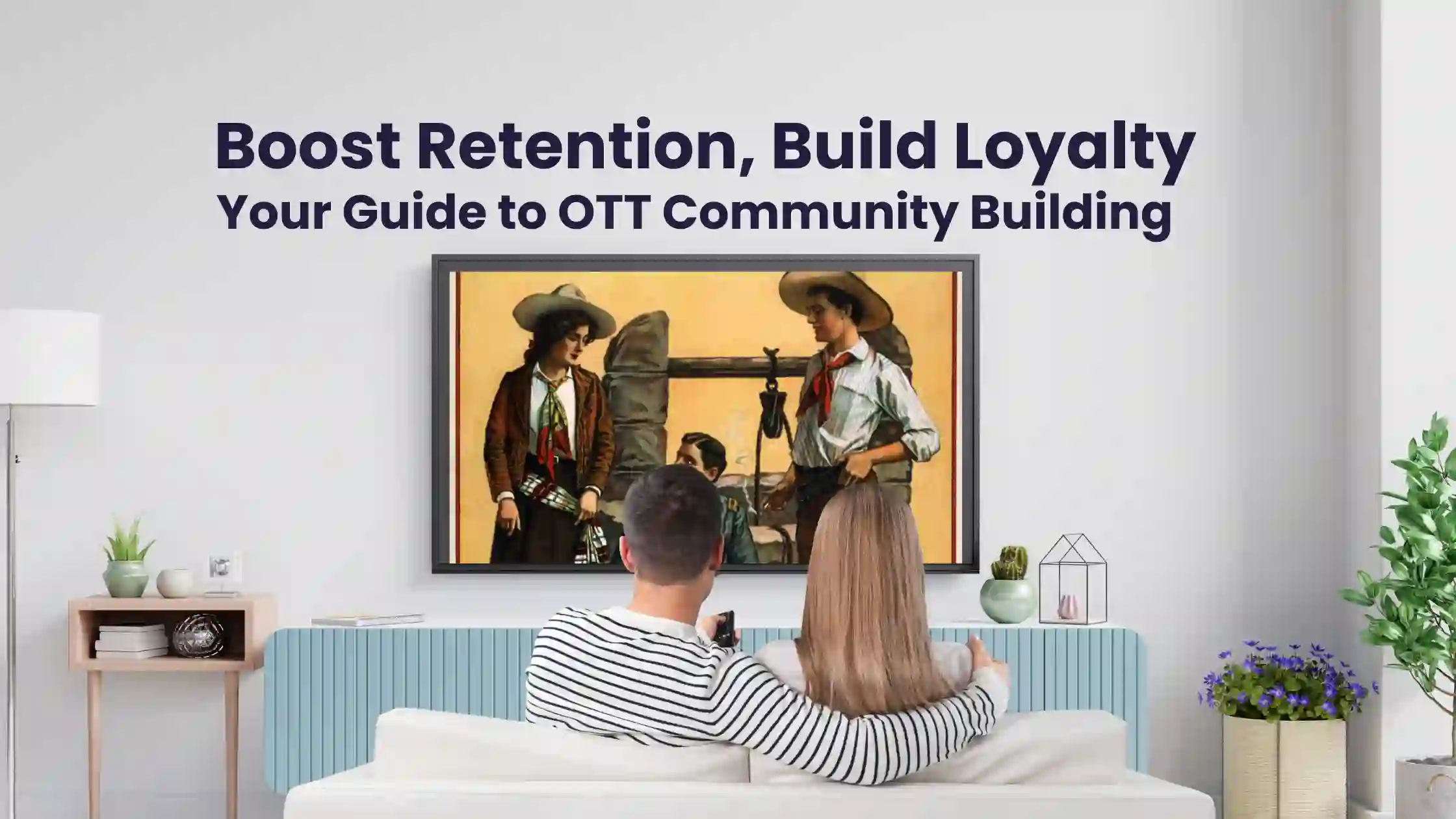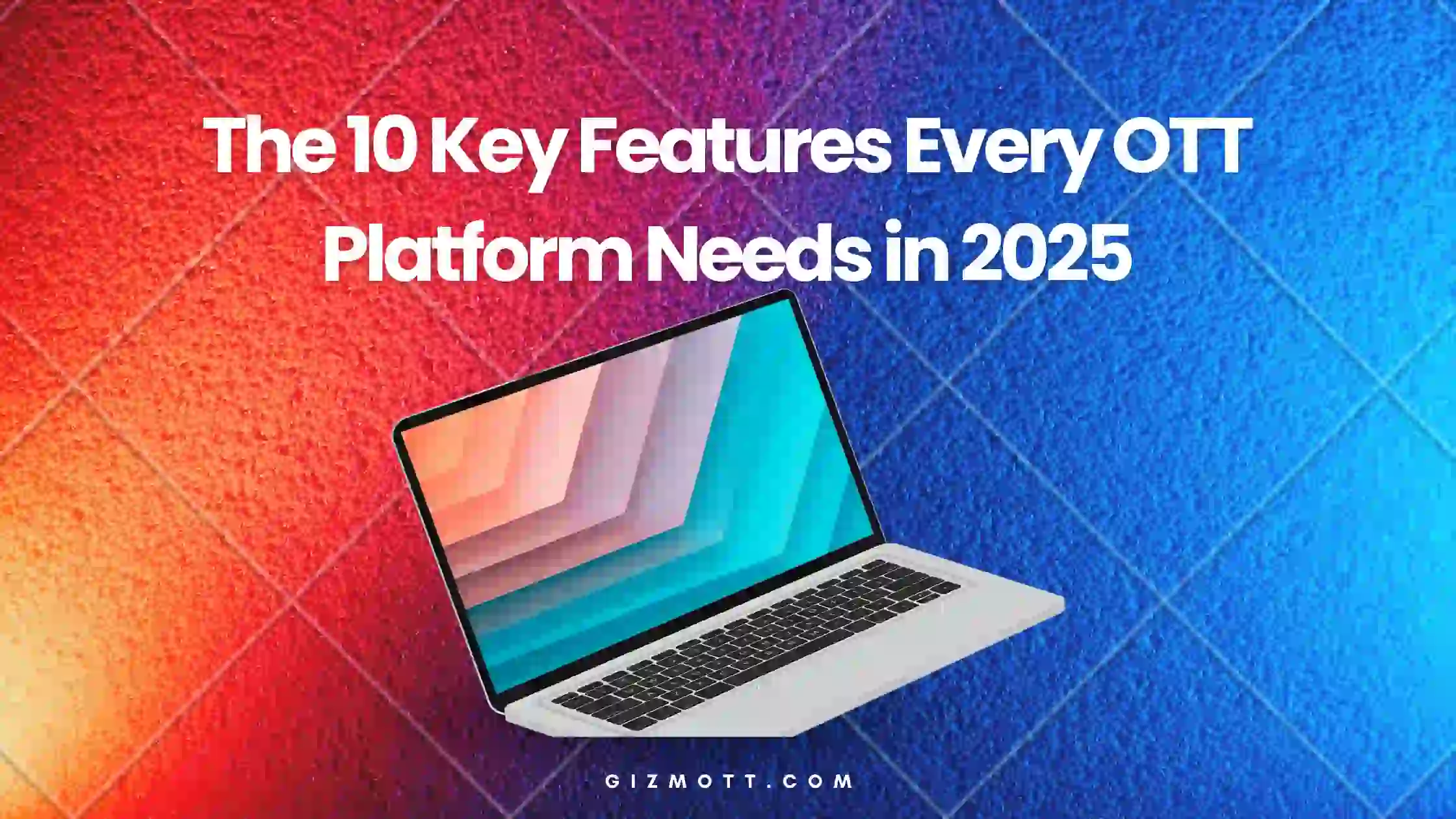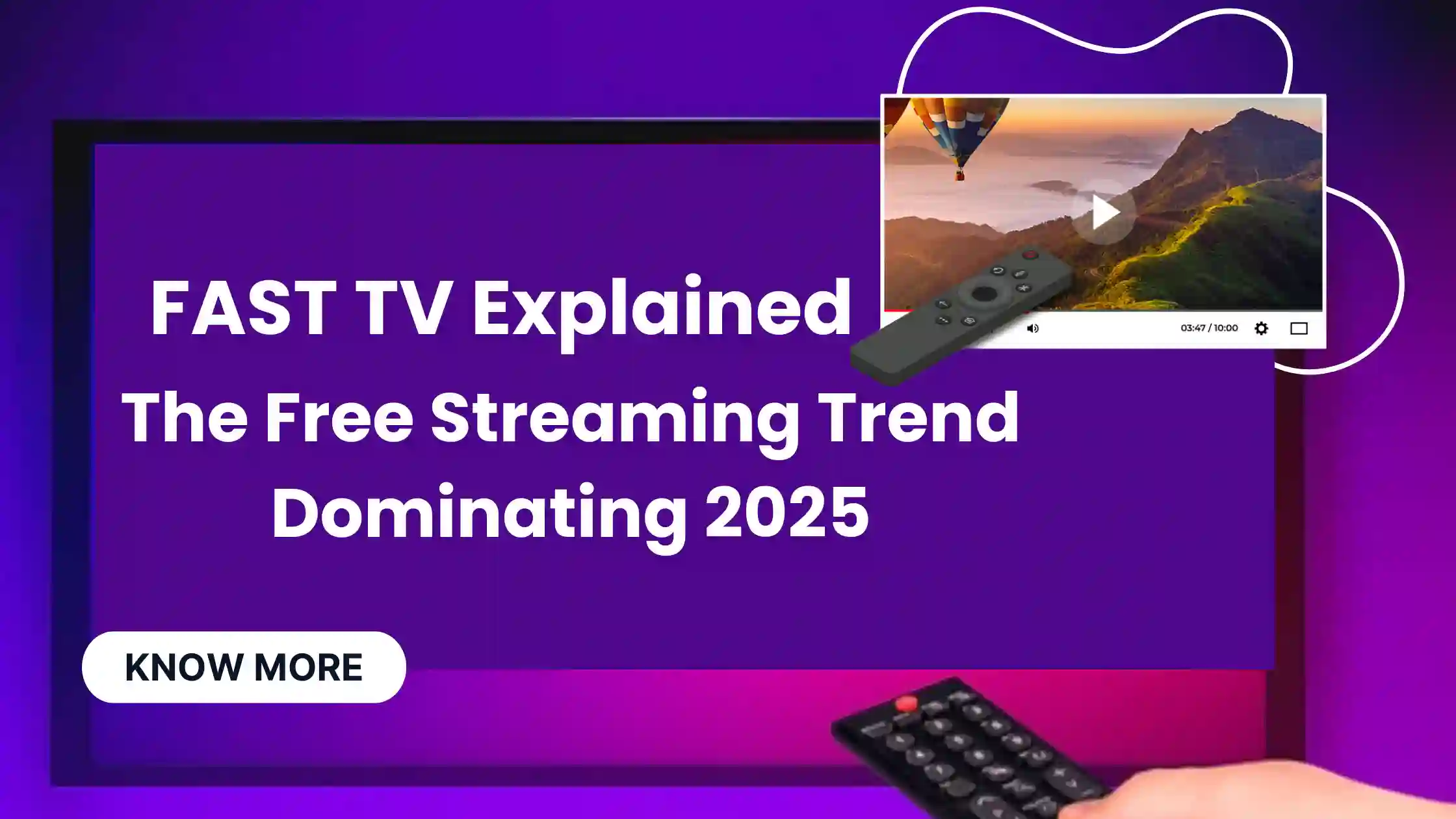If you’re involved in providing a TV service, you’re likely familiar with the different video monetization models available, such as AVOD, SVOD, TVOD, and PVOD. It can be a tough decision to choose which one will work best for your service or channel.
Many successful video businesses are now turning to hybrid monetization approaches, combining two or more of these models for increased success. In fact, two-thirds of OTT brands are planning to transition to hybrid monetization.
This blog will explain each model in detail and provide insights into how to embrace hybrid monetization to find the right revenue model for your TV service. It’s a great resource for anyone new to these concepts, and it’s designed to help you set up your first hybrid strategy and start earning revenue from your content.
What is AVOD?
AVOD, or ad-based video-on-demand, is a monetization model in which viewers can watch content for free, but revenue is generated through advertising. This means that the end-user does not need to pay any money to watch the content, but instead, they have to watch advertisements that are displayed before, during, or after the content. The broadcaster earns revenue based on the impressions or leads generated from these ads.
Popular AVOD platforms include YouTube, Roku, Pluto TV, and Dailymotion. For instance, YouTube operates under the AVOD model of monetization where content is available for free, but channels earn revenue from ads that are run on the videos. YouTube’s ad server is used to run ads, and creators receive revenue based on the number of playbacks.
There are various options available for AVOD services to generate revenue through advertising:
Benefits of AVOD
AVOD, or ad-based video-on-demand, provides numerous benefits to content creators, advertisers, and viewers alike:
• Free Content: AVOD provides free content to users, which can increase the audience base and engagement.
• Scalable and Sustainable Model: AVOD generates revenue through advertising, which is a scalable and sustainable model that can provide a reliable revenue stream for content creators.
• Targeted Advertising: Advertisers can target specific audiences, increasing the relevance and effectiveness of their ads, resulting in a higher ROI.
• Flexible Pricing Models: AVOD offers flexible pricing models, such as cost per impression or cost per click, providing more value for advertisers.
• Experimentation: Content creators can experiment with different ad formats and placements to optimize revenue.
• Data and Analytics: AVOD provides data and analytics to measure ad performance and audience engagement, enabling advertisers to make data-driven decisions.
• Hybrid Monetization Models: AVOD can be combined with other monetization models, such as SVOD or TVOD, to create a hybrid model that maximizes revenue and audience reach.
• Accessibility: AVOD offers a low barrier to entry, making it accessible for content creators and smaller businesses to monetize their content.
What is SVOD?
SVOD, or subscription video-on-demand, is a monetization model in which users pay a recurring fee for access to a library of content with no limits. It is currently the most popular and lucrative model in the OTT (over-the-top) market, with major players such as Netflix, Hulu, and Amazon Prime Video utilizing this model.
The popularity of SVOD has exploded in recent years, with major players in the industry such as Netflix, Amazon Prime Video, and Hulu becoming household names. SVOD has become a lucrative business model, as users are willing to pay for access to a wide range of content, and the recurring revenue stream allows providers to invest in creating new content and improving their platforms.
Benefits of SVOD
Here are some benefits of SVOD:
• Recurring Revenue: SVOD services offer a predictable and recurring revenue stream for content creators and providers, allowing for more stable financial planning and investment.
• No Ads: Unlike AVOD, SVOD services do not require ads to generate revenue, which can provide a more uninterrupted viewing experience for users.
• Flexible Subscription Plans: SVOD services often offer a range of subscription options, allowing users to choose the plan that best fits their needs and budget.
• Access to Exclusive Content: SVOD services often produce or license exclusive content that cannot be found elsewhere, providing a unique value proposition for users and helping to retain subscribers.
• Global Reach: With the internet as their distribution channel, SVOD services have the potential to reach a global audience, breaking down geographic barriers and reaching new markets.
• Greater Control: SVOD providers have greater control over their content and user experience, allowing them to tailor their service to their specific brand and audience.
What is TVOD?
TVOD is a video monetization model that is based on pay-per-view transactions, as opposed to the subscription-based model of SVOD. TVOD allows consumers to purchase content on a one-time basis, with two sub-categories available: electronic sell-through (EST), which grants permanent access to the content, and download to rent (DTR), which provides limited access for a lower fee.
TVOD services typically provide customers with the opportunity to access recently released content, which results in higher revenues for rights holders and enables consumers to access new content promptly. To retain customers, TVOD services often offer attractive price incentives, encouraging them to return for future content purchases.
Numerous examples of TVOD content can be found online, with major platforms such as Google Play and iTunes providing a wide selection. Prime Video also features many movies available on a TVOD basis. Tournaments and limited-time courses are often monetized through TVOD, with users paying specifically for access to that content rather than a broader subscription.
Benefits of TVOD
The following are advantages of TVOD:
• Timely access to new content: TVOD services tend to offer more recent releases, which gives consumers timely access to new content.
• Higher revenues for rights holders: Since TVOD allow for consumers to purchase content on a pay-per-view basis, it provides rights holders with higher revenues.
• Attractive pricing incentives: TVOD services typically retain customers by offering attractive price incentives, encouraging them to continue to return in the future.
• No long-term commitment: TVOD allows for consumers to purchase content on a one-time basis, providing them with no long-term commitment.
• Greater flexibility: TVOD provides consumers with greater flexibility as they can choose to watch content whenever they want without worrying about recurring payments.
• Variety of content: TVOD platforms offer a variety of content, including movies, TV shows, sports events, and educational courses, among others.
Overall, TVOD provides a convenient and flexible way for consumers to access and watch the content they want without the need for long-term commitments. At the same time, it provides rights holders with higher revenues and encourages them to continue producing new and high-quality content.
What is PVOD?
PVOD stands for “Premium Video on Demand.” It is a distribution model for films that allows users to rent or purchase newly released movies for a premium price, usually before they are available on streaming services or physical media.
This model is often used as a way for studios to recoup losses from films that may not have performed well at the box office due to the COVID-19 pandemic or other factors. Examples of PVOD platforms include Amazon Prime Video, iTunes, and Vudu.
PVOD offers benefits for both content owners and consumers. Here are some of the benefits of PVOD:
• Flexibility: PVOD provides consumers with the flexibility to watch new movies from the comfort of their homes without having to go to a theatre.
• Convenience: PVOD allows consumers to watch movies at any time they want, without having to wait for a scheduled showing in a theatre.
• Cost-effective: PVOD can be less expensive for families or groups who would normally have to purchase multiple tickets to see a movie in theatres.
• Revenue: PVOD can provide a new revenue stream for studios and distributors, as they can charge a premium for early access to new movies.
• Broad Reach: PVOD can offer content owners a wider audience reach, as it allows people from different geographic locations to watch movies at the same time.
• Safety: In situations like the COVID-19 pandemic, PVOD provides a safer alternative to traditional theatre experiences, allowing consumers to avoid crowds and maintain social distancing.
Overall, PVOD offers a more convenient and flexible movie-watching experience for consumers, while also providing content owners with an additional revenue stream and wider audience reach.
What is a Hybrid model?
A hybrid model refers to a business model that combines two or more different approaches to generate revenue or provide services. It is a combination of multiple revenue streams or approaches to meet customer needs and preferences.
In the context of the media industry, a hybrid model could involve offering different monetization options for the same content. For example, a movie studio may release a film in theaters and on PVOD simultaneously, offering customers the choice to either see the movie in theaters or rent it online. This allows the studio to generate revenue from both traditional box office sales and PVOD rentals.
Another example of a hybrid model in the media industry could be a streaming service that combines both AVOD and SVOD offerings. The service could have a free, ad-supported tier with limited content, as well as a subscription-based tier with more content and no ads. This approach caters to different types of customers with varying preferences and budgets, while also generating revenue from both advertising and subscription fees.
Benefits of a Hybrid model
A hybrid model of monetization in the entertainment industry offers several benefits:
• Flexibility: A hybrid model allows content creators and providers to offer multiple options for consumers to access their content. This means that consumers have more control over how they pay for and access content, which can increase customer satisfaction and loyalty.
• Diversification of revenue streams: A hybrid model allows for revenue streams from multiple sources, such as subscriptions, pay-per-view, and advertising. This can help mitigate the risks associated with relying on a single revenue stream.
• Greater audience reach: By offering multiple monetization options, a hybrid model can attract a wider range of consumers who have different preferences and budgets. This can increase the potential audience reach for content providers.
• Maximization of revenue potential: A hybrid model can maximize revenue potential by allowing content providers to charge premium prices for exclusive content while also offering lower-cost options for less exclusive content. This can help optimize revenue from different types of content and appeal to different segments of the market.
• Better data collection: A hybrid model can provide more comprehensive data on consumer preferences and behaviors, which can help content providers make more informed decisions about pricing and content development.
How to choose the right VOD monetization model
Choosing the right monetization model for your content largely depends on the type of content you have, your target audience, and your business goals. Here are some factors to consider when selecting a monetization model:
• Type of Content: Different types of content may work better with different monetization models. For example, a TV show or movie with a large and dedicated audience may work well with an SVOD model, while a one-off event like a concert or sports game may be better suited to a TVOD model.
• Target Audience: Consider the demographic of your target audience. If your audience is younger and tech-savvy, they may prefer an AVOD model that is free to access with ads. If your audience is more niche and willing to pay for premium content, an SVOD or TVOD model may work better.
• Pricing: Consider the price point that your audience is willing to pay for your content. A low-priced TVOD model may work better for content that is less premium, while a higher-priced SVOD model may be more appropriate for premium content.
• Competition: Consider what monetization models your competitors are using. If they are using a particular model, it may be an indicator that it works well for your type of content.
• Business Goals: Consider what your overall business goals are. If you want to quickly grow your user base and generate ad revenue, an AVOD model may be the best choice. If you want to generate more predictable revenue streams over time, an SVOD or TVOD model may be more appropriate.
In summary, choosing the right monetization model requires a thorough understanding of your content, target audience, pricing, competition, and business goals. By considering these factors, you can make an informed decision about which monetization model will work best for your content and help you achieve your business objectives.
Get started with Gizmott
It is important to understand that choosing the right monetization model for your video content depends on various factors such as the type of content, target audience, market trends, and revenue goals. AVOD, SVOD, and TVOD all have their own advantages and disadvantages and can be utilized depending on the content and target audience. Hybrid models can also provide benefits by combining different monetization models.
If you’re thinking about starting your own streaming platform, then you’re in the right place. Gizmott will help you build your very own OTT platform and guide you through the monetization strategies to stay ahead of the competition in the dynamic world of streaming media.
